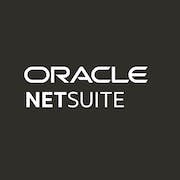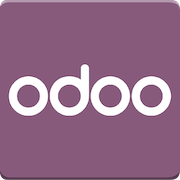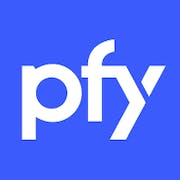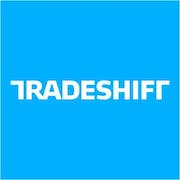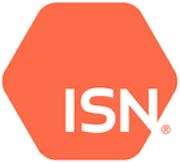Looking for the best purchasing software? Our comprehensive buyers guide covers everything you need to know, from features to benefits and more. Explore the guide now to make the right choice for your business.
Purchasing software is a crucial decision for businesses of any size. It can streamline processes, make purchasing more efficient, and ultimately save valuable time and money. However, with a wide range of options available on the market, it can be overwhelming to determine which solution is the right fit for your business. That's where this buyers guide comes in. We've done the research and analysis for you, so you can make an informed decision that will benefit your business for years to come. Keep reading to find out everything you need to know before making your purchase.
What is purchasing software?
This is a specialized type of business software that is used by companies to optimize their procurement processes. The technology automates and streamlines procurement workflows, such as purchase order creation, vendor management, and payment processing. It reduces the need for manual processes, which can be time-consuming and error-prone. Instead, this tool uses automation and pre-defined workflows to ensure that orders are placed quickly and accurately, and that vendors are paid in a timely and efficient manner.
In addition to streamlining procurement processes, purchasing technology provides several other benefits to businesses, including:
- Increased accuracy and transparency in purchasing processes
- Improved vendor management
- More strategic procurement decisions
- Better budget control
- Detailed analytics for business intelligence
These benefits make it a valuable investment for many types of businesses, including:
- Manufacturing companies that need to manage complex supply chains and production schedules
- Retail businesses that rely on timely and efficient shipping and delivery of goods
- Healthcare organizations that need to manage complex purchasing processes for medical equipment and supplies
- Professional services firms that need to manage procurement for their clients
What are the key benefits of utilizing a purchasing solution?
Here are some main benefits of a purchasing application:
- Improved productivity: The software can automate and simplify repetitive tasks, such as data entry and report generation. This saves time and enables employees to focus on high-priority tasks, improving productivity and efficiency.
- Enhanced accuracy: It eliminates the risk of human error, which can be costly and time-consuming to rectify. By automating tasks, it ensures that data is entered accurately and consistently.
- Increased collaboration: A purchasing solution can facilitate collaboration between team members by providing a central platform for communication and file sharing. This enhances teamwork and fosters a sense of camaraderie within the workplace.
- Enhanced customer service: This technology can help businesses provide better customer service by streamlining processes and providing tools for tracking customer interactions and feedback. This helps businesses to improve customer satisfaction and loyalty.
- Greater insights: A purchasing program can also provide valuable insights into business performance by analyzing data and identifying trends and patterns. This allows businesses to make informed decisions and improve their procurement strategies.
- Improved security: It can help businesses to protect their data and systems from cyber threats by providing encryption, authentication, and other security features. This reduces the risk of data breaches and cyber attacks.
10 key features of a purchasing package
Purchasing software, also known as procurement software can be used for a variety of tasks, including sourcing suppliers, managing purchase orders, tracking inventory, and more. In this section, we will discuss 10 of its most common features:
1. Purchase order management: This feature allows users to create and manage purchase orders within the purchasing system. Purchase orders can be easily tracked and updated as needed.
2. Supplier management: Procurement software often includes a supplier management module that allows users to manage supplier details, track supplier performance, and store important supplier documents. A survey by Gartner found that 68% of organizations reported improved supplier performance with procurement software, with cost savings of up to 30%.
3. Inventory management: This function enables users to track inventory levels and automate the process of reordering products. This ensures that the business always has the right amount of inventory to meet customer demand.
4. Approval workflows: A procurement tool often includes customizable approval workflows that enable users to ensure purchases meet company guidelines. This feature ensures that all purchases are authorized and comply with company policies.
5. Contract management: This tool allows users to manage important contract details, such as expiration dates and renewal terms. This ensures that businesses are always in compliance with their contractual obligations.
6. Reporting and analytics: A purchasing platform often includes powerful reporting and analytics tools that provide users with insights into procurement performance, spend analysis, and more.
7. Budget tracking: Some purchasing solutions include budget tracking features that enable users to manage their procurement spend and stay within budget.
8. Integration with accounting software: Many of them integrate with popular accounting software solutions, streamlining the procurement to payment process.
9. Vendor performance management: This enables users to track vendor performance and analyze data to improve their procurement processes and vendor relationships.
10. Mobile app: A wide variety of procurement solutions offer a mobile app that allows users to manage procurement tasks on-the-go, making it easier to stay on top of purchasing processes remotely.
Top considerations when investing in a procurement tool
Procurement technology can be a game changer for your business, streamlining the purchasing process and helping you manage your spending in a more efficient and effective way. In a Deloitte CPOs survey, it is reported that the key benefits of next-generation technologies in procurement were process efficiency 65%, process effectiveness 50% and increased agility 50%. However, with so many software options on the market, it can be difficult to know where to start. Here are some factors to consider:
1. Functionality: Consider what range of features the system offers and whether they align with your business needs. Some examples might include purchase order creation, inventory management, invoice tracking, and reporting capabilities.
2. Integration: It's important to ensure that the purchasing program can integrate seamlessly with your existing systems, including your ERP and accounting software. This will save time and reduce the risk of errors.
3. User-friendliness: The more user-friendly the solution is, the faster and easier it will be for your employees to adopt and utilize it successfully. Look for one that has an intuitive interface and that doesn't require extensive training and support.
4. Customization: Can the platform be customized to fit your specific business requirements? This is important if you have unique processes or if you need to comply with regulatory requirements.
5. Scalability: As your business grows, the volume of purchases and invoices will likely increase. Make sure the tool you choose can handle the growth and can scale with your business.
6. Security: Given that the application handles sensitive financial data, it is crucial to ensure it has robust security features to guard against cyber threats and fraud.
7. Customer support: Consider the level of customer support provided by the software vendor. Will they offer training and support to ensure you get the most out of your investment?
Market trends for purchasing software
One of the biggest trends in purchasing software for 2024 and beyond is the integration of artificial intelligence. With AI, this technology will be able to analyze data to detect patterns and make suggestions for purchasing decisions. Another important trend is the move towards cloud-based solutions, which allows for easier access for remote workers and improves data security.
Mobile optimization is also becoming increasingly popular, as more people use mobile devices to make purchases. Furthermore, purchasing technology is expected to become more user-friendly, with intuitive interfaces and simplified processes. This trend will not only improve the user experience but also increase productivity and reduce errors.
Automation is another trend that is gaining traction, as the system can take on repetitive tasks, freeing up time for employees to focus on more strategic activities. White papers will continue to be a valuable tool for businesses looking to educate their audience about procurement platforms. They provide an in-depth analysis of the software, its benefits, and how it can be implemented in various business environments. Interactive study tools like Quizlet can also be useful for learning about this innovation. With the right tools and approaches, businesses can stay ahead of the curve and make the most of the latest trends in purchasing software.
Conclusion
In conclusion, purchasing software is a strategic asset that can transform your procurement function. By carefully assessing your needs, exploring available options, and choosing a solution that aligns with your business objectives, you can unlock substantial benefits and drive your organization toward greater efficiency and profitability. The right purchasing software not only simplifies procurement processes but also lays the foundation for sustainable growth and competitive advantage. A research by Bain & Company shows that 80% of procurement professionals believe they need to do more to take advantage of such latest digital tools.

